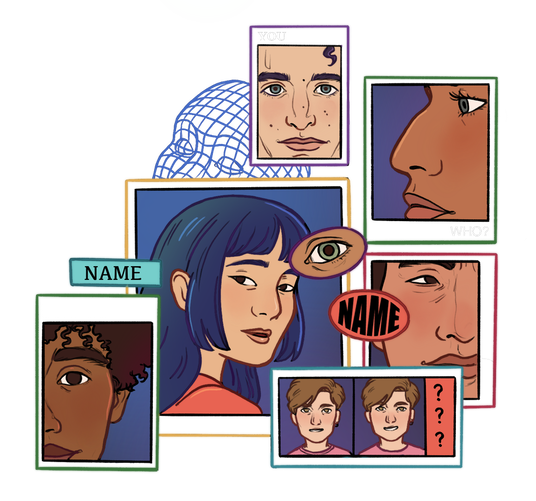|
By Lauren Goralsky “You look familiar. How do I know you?” Walking down the street, attending class, or going to the grocery store, people often ask themselves this question. At times, it may seem that each face is a part of a homogeneous sea. Humans generally share the same basic facial features and expressions across cultures. Yet, our brains have the impressive capacity to distinguish between and identify approximately 5000 faces. So, how exactly are we able to do this? The answer may lie in the temporal lobe, one of the brain’s 4 defined areas, alongside the frontal lobe, occipital lobe, and parietal lobe. Each lobe has a different concentrated function, with the temporal lobe playing a role in short-term memory, speech, musical rhythm, and recognition. Our brain’s facial recognition system is still being studied, but scientists have identified neurons in the temporal lobe involved in the process of recognizing faces. These basic units of the brain communicate with one another to augment the brain’s ability to identify familiar faces.
Examining brain processing in more detail, scientists have found that a specific region of the temporal lobe is activated in facial recognition: the fusiform gyrus. Recent experimental findings support the idea that altering the fusiform gyrus can significantly impair face-recognizing abilities. In a 2011 study, a neurologist stimulated different regions of the brain in order to localize the source of a patient's epilepsy. Upon the electrical stimulation of the fusiform gyrus, the patient reported that the neurologist’s face became unrecognizable. Once the stimulation was removed, the effect faded, and recognition returned. Although facial recognition in general is associated with activation of the fusiform gyrus, the process of facial recognition when recognizing a familiar or unfamiliar face initiates different pathways of electrical activity in the brain. While these different neural circuits are still being studied in humans, progress has been made through examining the mental activity of an evolutionary cousin of the human race: marques. When marques were shown familiar, personal faces of other marques that had lived in the same area, as compared to marques whose pictures they had recently seen repeatedly or unfamiliar marques, the activation of two different regions of the brain were observed to increase: one augmented region is associated with memory, specifically declarative and factual forms, while the other is associated with social memory. No such activation was seen when the marques were shown unfamiliar faces. An older theory of facial recognition suggested that individual neurons were associated with recognition of separate people. However, many scientists now believe groups of neurons are responsible for recognizing a face, with individual neurons associated with different facial features rather than different people. A recent study found that between two macaque monkeys, 205 neurons were used to identify a series of 2000 human faces with varying facial features. As summed up by scientist David Leopold of the U.S. National Institute of Mental Health, neurons are face analyzers, not detectors. So how is a person able to recognize a face? We don’t exactly know. However, by studying the puzzle pieces of the brain’s functioning, including activated regions and the association between neurons and specific facial features, scientists continue to unlock more mysteries of the mind.
0 Comments
Leave a Reply. |
Categories
All
Archives
April 2024
|

